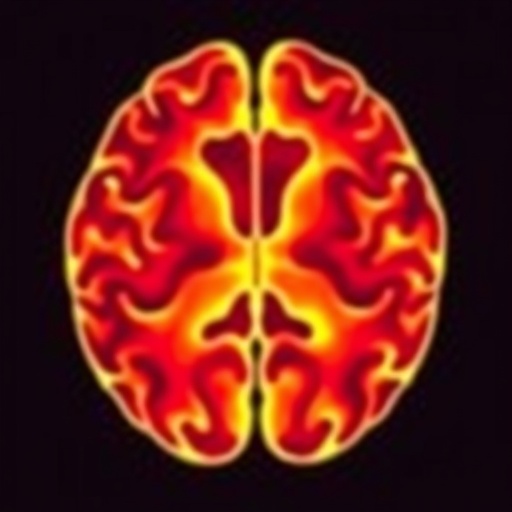In a groundbreaking retrospective study published in BMC Cancer, researchers have investigated the therapeutic potential of combining anlotinib with temozolomide (TMZ) for patients grappling with recurrent or residual glioma. This study, conducted at a single center with 30 eligible patients, shines light on a promising treatment avenue amid an urgent need to improve outcomes in this devastating brain cancer.
Gliomas, known for their aggressive recurrence and challenging brain involvement, continue to pose significant treatment barriers. Standard care usually involves a combination of radiotherapy and chemotherapy with temozolomide, but recurrence remains common, often accompanied by tumor residues in critical brain areas, limiting surgical options. Against this backdrop, anlotinib—a novel multi-targeted tyrosine kinase inhibitor known for its antiangiogenic and antitumor properties—has been posited as a potential adjunct to traditional chemotherapy.
The study enrolled patients who either experienced tumor relapse following the standard TMZ-radiotherapy regimen or had macroscopic residual tumors due to the involvement of eloquent brain regions, which restrict surgical removal. Between March 2018 and January 2021, these individuals embarked on a therapeutic protocol combining anlotinib, given as 12 mg once daily on a 14-days-on, 7-days-off schedule, with temozolomide administered at 200 mg/m² for 5 days followed by a 23-day break. Treatment was maintained until signs of disease progression or unacceptable toxicity emerged.
Efficacy was rigorously assessed via the Response Assessment in Neuro-Oncology (RANO) criteria, designed specifically for high-grade gliomas, enabling an accurate appraisal of tumor responses. Concurrently, the safety of this combined regimen was monitored using the National Cancer Institute’s Common Terminology Criteria for Adverse Events (NCI-CTCAE) version 4.0, establishing a comprehensive safety profile.
Results observed after a median follow-up duration of over two years were illuminating. The median overall survival time, measured from recurrence until death or last follow-up, reached 17.87 months—a notable figure amidst typically poor prognoses associated with recurrent glioma. Survival rates at critical time points—1 year, 1.5 years, and 2 years—stood at 60.0%, 46.7%, and 36.7%, respectively, indicating sustained benefits from the treatment regimen.
Progression-free survival (PFS), reflecting the interval between treatment initiation and disease progression, had a median duration of 7.83 months, with the 6-month and 1-year PFS rates at 63.3% and 36.7%. These results suggest a meaningful delay in tumor advancement, offering patients critical time with improved quality of life.
Diving deeper into the patient subgroups, univariate analyses revealed pivotal insights. Patients diagnosed with WHO grade 2 gliomas showed significantly prolonged overall and progression-free survival compared to those with higher-grade tumors—grades 3 and 4. Specifically, median OS for grade 2 was an impressive 30.45 months, while grade 3 and grade 4 patients exhibited median survivals of 15.07 and 9.21 months respectively. Statistical analysis underscored the significance of tumor grade on survival outcomes, with a p-value of 0.035.
Age emerged as another critical prognostic factor influencing PFS. Patients aged 55 or younger experienced a markedly longer median progression-free survival of nearly 13 months, whereas those above 55 had a median PFS of 7.33 months. Although older patients trended toward shorter overall survival (10.53 months vs. 19.90 months), this did not reach statistical significance (p=0.106). Intriguingly, common genetic markers such as 1p/19q codeletion and IDH mutations—often considered prognostic in glioma—did not predict outcomes significantly in this cohort.
Multivariate analysis, which controls for confounding factors, corroborated that neither age, pathological grade, nor IDH mutation status independently predicted survival outcomes. These findings highlight the complexity of glioma biology and the need to consider multiple clinical parameters when forecasting treatment responses.
Safety evaluation revealed that the combination of anlotinib and temozolomide was generally well-tolerated. Toxicities were manageable and consistent with known side effect profiles of these agents, suggesting that the regimen could be integrated into clinical practice without imposing undue burden on patients. This tolerability is particularly important given the vulnerable patient population and the need for therapies balancing efficacy and quality of life.
This retrospective analysis, while limited by its sample size and single-center nature, positions anlotinib combined with temozolomide as a compelling therapeutic strategy for recurrent glioma. The survival benefits, coupled with acceptable toxicity, warrant further validation in larger, randomized controlled trials to delineate the precise role and mechanism of this combination.
The study’s findings infuse hope into the neuro-oncology community, where recurrent gliomas have long defied effective long-term control. If future trials confirm these outcomes, anlotinib plus TMZ could redefine the standard of care, offering patients extended survival and improved management of a daunting disease.
Continued research is expected to unravel the molecular underpinnings behind anlotinib’s enhanced efficacy when paired with temozolomide, potentially leading to biomarker-driven personalized treatment plans. Moreover, understanding resistance mechanisms and exploring combinations with other targeted therapies could further amplify clinical benefits.
In sum, this study exemplifies the dynamic progress in neuro-oncology therapeutics and underscores the critical need for innovative combinations in tackling recurrent gliomas. By harnessing the synergy of antiangiogenic agents like anlotinib with established chemotherapeutics, there is renewed optimism for improving patient outcomes in a landscape historically marked by therapeutic stagnation.
As this study gains attention, it catalyzes a broader conversation about integrating novel kinase inhibitors into glioma treatment regimens and prompts clinicians and researchers alike to reexamine current paradigms. The results advocate a future where precision oncology not only extends survival but also enhances the quality of life for glioma patients worldwide.
With gliomas continuing to challenge medical science, such advances reflect a triumph of innovation, perseverance, and the relentless pursuit of better therapies. This evolving narrative ultimately reaffirms the transformative power of combining targeted molecules to overcome the inherent resilience of malignant brain tumors.
Subject of Research: Evaluation of efficacy and safety of anlotinib combined with temozolomide in treatment of recurrent/residual glioma.
Article Title: A retrospective study of 30 cases evaluating the efficacy and safety of anlotinib plus Temozolomide for recurrent/residual glioma from a single center.
Article References:
Xu, L., Yu, D., Li, F. et al. A retrospective study of 30 cases evaluating the efficacy and safety of anlotinib plus Temozolomide for recurrent/residual glioma from a single center. BMC Cancer 25, 1623 (2025). https://doi.org/10.1186/s12885-025-15123-7
Image Credits: Scienmag.com




